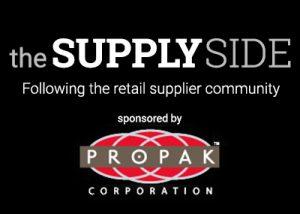The Supply Side: Holiday divides retail winners from losers
by January 9, 2018 4:04 pm 707 views

The 2017 holiday season was believed to be the strongest for retailers since 2011 with increased spending from consumers. That said, there continues to be a wide split between the winners and losers in retail according to Sucharita Kodali, a retail analyst with Forrester.
Kodali said top-line sales were strong throughout the holiday season, but when all the receipts are tallied and reported to investors over the next 45 days there will be winners and losers given the highly promotional holiday deals which likely eroded margins in categories like apparel and toys.
She said Amazon, Starbucks, Wal-Mart Stores, Five Below, Ulta and Sephora are likely among the winners. She said Macy’s likely also pulled off a decent year, but with 21 retailer bankruptcies announced last year — 13 of which were in the fashion sector — there will be more losers than winners when the dust settles.
“The department stores are the most challenged, and this could make it or break it for Sears and JC Penney … 2018 and 2019 are going to be tale-tell signs for the department store sector as we will have to see how much life they have in them in the next 12 to 18 months,” Kodali notes.
She said Wal-Mart has worked to shield itself from deep promotions, and Starbucks had robust gift card sales with discounter Five Below performing well among value seekers. Kodali said Ulta and Sephora have been also been on fire with consumers spending more in the beauty category in recent years.
SHOPPING SURVEY
Fayetteville-based Field Agent recently asked consumers about their recent holiday spending patterns to discern the winners from the losers. The survey was completed on Dec. 27. And 67% of the respondents were female, and 33% were male. The survey asked consumers where they purchased gifts during the holiday season. The respondents were able to list more than one retailer.
 Field Agent reports 76% of consumers surveyed said they purchased holiday gifts at Wal-Mart making the retailer the most shopped by those surveyed. Amazon was a popular response with 67% of consumers, and Target finished third with 57% of consumers shopping there.
Field Agent reports 76% of consumers surveyed said they purchased holiday gifts at Wal-Mart making the retailer the most shopped by those surveyed. Amazon was a popular response with 67% of consumers, and Target finished third with 57% of consumers shopping there.
Other retailer responses include:
• Kohl’s: 33%
• Best Buy: 28%
• Walgreens: 25%
• Toys R Us: 22%
• Sam’s Club: 18%
• CVS: 17%
• Costco: 16%
Shoppers were also asked where they spent the most money on holiday gifts. Some 30% of consumers named Amazon as their biggest spend, with Wal-Mart coming in a close second at 29%. Target finished third at 11%. Best Buy and Kohl’s each had 5% of shoppers naming them as their biggest spend. Field Agent said no other retailer garnered more 2% of their total holiday spend.
Nearly eight out of 10 consumers surveyed said they preferred to do most of their holiday shopping in brick and mortar stores. But 73% said they made gift purchases online, choosing home delivery (66%) as well as in-store pickup (36%). Five percent of shoppers said they purchased gifts via TV networks and catalogs.
Field Agent asked consumers if they spent more money ordering online than in brick and mortar stores. Half of the respondents said they spent more online this year and the majority of them choosing home delivery versus in-store pickup.
Lastly, Field Agent asked consumers which categories they spent the most on this holiday season. Toys were the big winner with 23% of shoppers saying they purchased more toys than other items this year. Electronics were the second biggest spend for 20% of consumers this past holiday season. Clothes and footwear was also a big category spend for 16% of consumers surveyed.
Gift cards also remain popular with consumers as 9% said that was where they spent the most money. Entertainment was also a popular category with 8% spending big on tickets and other entertainment options. Categories like handbags, kitchenware and beauty were popular with 4% of consumers who spent big in these areas. Less popular was home goods, sporting goods, outdoor equipment and tools, according to the Field Agent report.
Analysts have said the 2017 holiday season would be an acid test for some retailers like Toys R Us, one of 21 retailers that filed bankruptcy last year.
STORE CLOSURES
“Store closures are a major theme in U.S. retail, as many overspaced retailers are reacting to the migration of sales online by closing physical locations,” said Deborah Weinswig, an analyst with Fung Global Retail & Technology.
Weinswig reports nearly 7,000 store closure announcements were made in calendar 2017. She said this represents a 200% increase from the prior year. Weinswig published a complete list. Below are some the largest store closure announcements in 2017.
• RadioShack: 1,000 stores
• Payless ShoeSource: 700 stores
• Rue 21: 400 stores
• Dress Barn: 400 stores
• Gymboree: 350 stores
• The Limited: 250 stores
• Family Christian: 240 stores
• HHGregg Inc.: 220 stores
• Sears: 202 stores
The biggest reason for store closures remains retailers being over-leveraged, according to Moody’s analyst Christina Boni. She expects there will be another round of store closures announced in early 2018.
–––––––––––––––––
Editor’s note: The Supply Side section of Talk Business & Politics focuses on the companies, organizations, issues and individuals engaged in providing products and services to retailers. The Supply Side is managed by Talk Business & Politics and sponsored by Propak Logistics.
